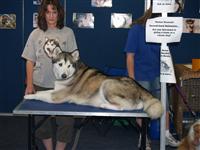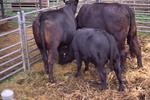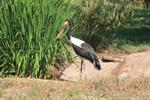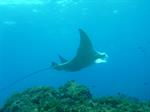
This is a course specially designed certificate for people wishing to work or working in animal care, animal health care or environment wishing to deepen their knowledge in animal care, animal science and zoology.
It is also very good foundation for those considering higher qualifications in animal studies, like Zoology, Mammalogy or Biology. The Certificate consists of nine (9) X 100 hr modules. It allows you to start studying this discipline and obtain a shorter qualification before committing to longer studies
Module Aims
The aims for each of the modules in this qualification as listed below, will provide a clear indication as to what you may achieve through undertaking this course.
 Animal Anatomy and Physiology
Animal Anatomy and Physiology
- Differentiate and describe the basic structure and function of cells and tissues of animals.
- Explain the digestive system, in terms of both structure and function, of animals.
- Explain the circulatory systems, in terms of both structure and function, of animals.
- Explain the urinary system, in terms of structure and function, of animals.
- Explain the nervous system, in terms of structure and function, of animals.
- Explain the respiratory system, in terms of structure and function, of animals.
- Explain the reproductive system, including structure and function, of animals.
- Explain the skeletal system, in terms of structure and function of animals.
- Explain the biological mechanisms underlying the growth and development of specified animal species.
- Explain the endocrine system, in terms of structure and function, of animals.
- Explain the muscular system, including the structure, function, and meat quality of animals.
- Explain the differences between various types of farm animals, in terms of structure and function.
- Explain the nature of animals in the primary production industry, with specific reference to your locality.
 Biochemistry I -Animals
Biochemistry I -Animals
- Identify characteristics of common chemical compounds important in animal and human biochemistry.
- Explain the characteristics of major biochemical groups, including carbohydrates, lipids, and proteins.
- Explain the characteristics of chemicals which control biological processes in animals and humans, including enzymes and hormones.
- Explain the role of nucleic acids in the biology of animals and humans.
- Explain the role of thermo-regulation in animals and humans.
- Explain the role of carbohydrate metabolism in animals and humans.
- Identify the characteristics of acidity and alkalinity in relation to animals and humans.
- Develop simple chemical analysis skills relevant to testing animals.
- Identify applications and uses for biochemical processes and products.
Biochemistry II
- Describe the characteristics of a range of biochemical molecules
- Distinguish between different groups of biochemical molecules.
- Describe the structural characteristics and other properties that differentiate standard amino acids one from another.
- Discuss structures of different proteins (both covalent and 3-dimensional).
- Describe common protein dynamics including folding, structural evolution and haemoglobin function.
- Describe the structure and dynamics of different types of saccharides and polysaccharides.
- Discuss the composition and structure of both lipids and membranes.
- Describe the structure and dynamics of different types of enzymes, vitamins and hormones.
- Describe the structure and function of different types of nucleic acids including DNA and RNA.
- Identify some of the basic laboratory techniques used in biochemistry and to appreciate the importance of safety in the laboratory.
 Vertebrate Zoology
Vertebrate Zoology
- Distinguish between major groups of vertebrates through a demonstrated understanding of their taxonomic classification and diversity.
- Describe the distinguishing characteristics of all major groups of fishes.
- To describe the distinguishing characteristics of all major groups of Ectotherms, Amphibians and Reptiles.
- Describe the distinguishing characteristics of major groups of birds
- Describe the distinguishing characteristics of all major groups of Mammals.
- Describe the distinguishing characteristics of animals in the order Marsupialia and compare mammalian specialisations with those of other vertebrates.
- Describe the distinguishing characteristics of animals within the grandorders Glires and Insectivora. Explain Ectothermy in a variety of different animals.
- Describe the distinguishing characteristics of animals within the order Carnivora.
- Describe the distinguishing characteristics of animals within the grand order Ungulata.
- Describe the distinguishing characteristics of animals within the grandorder Archonta.
Ornithology
 Describe anatomical and physical characteristics of birds.
Describe anatomical and physical characteristics of birds. - Discuss the study of birds, including bird taxonomy
- Describe anatomical and physical characteristics of birds.
- Discuss a range of different common and widespread land birds.
- Discuss a range of different flightless and long legged birds including Ratites and Ciconiiformes.
- Discuss and describe a range of water birds and sea birds.
- Discuss and describe a range of hunting birds.
- Discuss and describe a range of Passeriformes.
- Discuss and describe a range of parrots and other birds.
- Explain domestication of birds and the methodology and implications of attracting and feeding wild birds.

Marine Studies I
- Identify characteristics of various marine environments
- Discuss the first basic groups of marine animal life
- Identify characteristics of various marine environments
- Discuss the first basic groups of marine animal life.
- Describe the range of molluscs and crustaceans in the marine environment and their lifecycles.
- Describe the biology and ecological significance of Cephalopods and Clupeoids in the marine environment.
- Describe a range of cartilaginous fish (sharks, rays) and selected bony fish (eels) that inhabit the ocean.
- Describe selected species and the diversity of marine fish that exists in the world’s oceans.
- Describe a range of marine mammals.
- Discuss the presence of marine mammals in the seas and oceans of the world.
- Describe a range of reptiles and birds that co-habitat with fish in the marine environment.
- Explain the impact of humans upon marine environments and of selected aspects of commercial fishing.
Animal Behaviour
- Identify factors affecting animal behaviour.
- Describe the influence of genes on animal behaviour.
- Explain how animals perceive and how they respond to various stimuli.
- Explain the influence of environment factors, such as circadian rhythms, on biological clocks, reproductive cycles, orientation and other animal behaviours.
- Explain the social influences on animal aggression, play, sexual behaviour, communication and other behaviours.
- Describe different ways that animals learn (such as conditioning and habituation) and some effects of learning on behaviour.
- Discuss psychological implications of different handling techniques.
- Identify abnormal animal behaviour (eg. psychotic, neurotic behaviour) and ways to reduce dependence on humans.
Environmental Assessment (option A)
- To appreciate the range of employment available to scientists skilled in environmental assessment
- Develop an understanding of the basics of environmental study design, analysis and reporting within a legal framework.
- Be aware of the international legislation relevant to environmental assessment
- Research the legislation which dictates the environmental assessment requirements in the student’s home country.
- Appreciate the range of environmental assessment techniques that have been developed to assess a range of situations around the globe.
- Understand the environmental assessment process in enough depth to manage a small environmental assessment.
- Write a professional environmental report.
- Prepare an environmental impact assessment including carrying out all research and writing up the actual report.
Professional Practice for Consultants (Option B)
- Analyse current industry requirements and your individual needs to determine if opening a consultancy is appropriate.
- Determine the business structure appropriate for your consultancy practice.
- Produce a business plan and implementation schedule
- Determine costs involved in setting up a practice and how to set fees.
- Describe different communication and marketing techniques.
- Describe different administrative procedures including invoicing and maintaining records and accounts.
- Determine industry best practice for obtaining and keeping your customers
- Recognise responsibility towards yourself and employees in maintaining and expanding your practice, and to develop strategies to cater for increased demand
Industry Meetings
This can be satisfied by attending seminars, conferences, trade shows or even participating on committees. It simply needs to be approximately 100 hrs of being involved in a way that allows you to learn through interacting with other people in industry or skilled in the things you are studying. Proof can usually be supplied in the form of a reference (or several).
Full Course Duration: 900 hours
HOW WILL THIS COURSE HELP TO TO GET A JOB OR PROMOTION?
Will doing a course get me work? No not always! Many people study just to get a qualification and having a qualification may be no guarantee for work. What
will get you work in the field of animal science is studying the right subjects and retaining, but more
importantly being able to recall and apply your knowledge and skills
later (even years later). Not all courses set you up for this – some
people are rushed though courses, rather than studying at a self-paced
speed, they need to fit in with course deadlines. This makes people rush
and rushing does not allow you to truly absorb information – lack of
absorption means an inability to recall and apply knowledge. What you learn from a good course does greatly increase your employment opportunities.
What do I need to Get Work as an Animal Science Graduate?
- Sound demonstrable knowledge and skills pertinent to the job; in animal science you will
need a broad knowledge - such as anatomy, physiology, biochemistry and animal behaviour a
qualification but this is just one part of what employers look for, many people have qualifications -
but it is how you are able to apply and demonstrate your knowledge that
will count most to your potential employer.etc.
- Good communication skills: verbal, written and
IT skills are the very basis of a professional in any industry and
horticulture is no exception. You need to be able to communicate
effectively at all levels – with workers, your peers, and your employers.
- Problem solving skills: In the work place, and
as a professional, you will need to problem solve all the time – you
need to be able to think on your feet, come up with quick solutions and
make sure that those solutions are carried through and actually work.
Problem solving skills are encouraged in ACS courses because your set
tasks and assignment are based on Problem Based Learning – a system
which is proven to produce graduates that have advanced problem solving
capabilities and there is nothing an employer likes more!
- Efficiency: Efficient workers know how to plan,
organise, have logic and be able to apply it to work load and
production (doing the things in the right order in an organised way).
Efficient don’t need to do this quickly they should be adept at applying
skills and expertise.
- Professional attitude: employers prefer people with good personal presentation and the ability to work cooperatively within a team environment.
- A passion for the industry: Employers also
prefer those that show a passion for their work and you can demonstrate
this by being across the latest developments pertinent to your industry
sector, you can do this through network
within industry; volunteering to get experience, memberships to clubs,
societies, associations; reading literature all help you gain a good
profile and make you stand out from others applying for the same
positions.
What Can You do to Improve Your Career Prospects?
- Make
sure you are studying to gain knowledge, experience and skills rather
than just doing it to get the ‘piece of paper’. See study as a first
step – continue studying and learning throughout your professional life,
keep up with technology and be passionate about your work. Read, attend
conferences, check the news in your industry, read industry papers,
network and so on.
- Never
learn from one source – use all that you can and from a diverse range
of sources – textbooks, internet sources such as universities and other
respected sites, through industry conferences and through networking. By
learning from many sources it opens up your mind and also gives you a
more diverse perspective on what you are studying.
- Make
sure your C.V. is well written and presented and set out to current
preferences –get help if you need it (tutors at this school will help
our students with their C.V.'s if you ask - no cost. Resume writing
services can also be used, but they charge).
- Recognise
your weaknesses, and work on improving them - not just academically.
Know your strengths and don’t be afraid to show it!